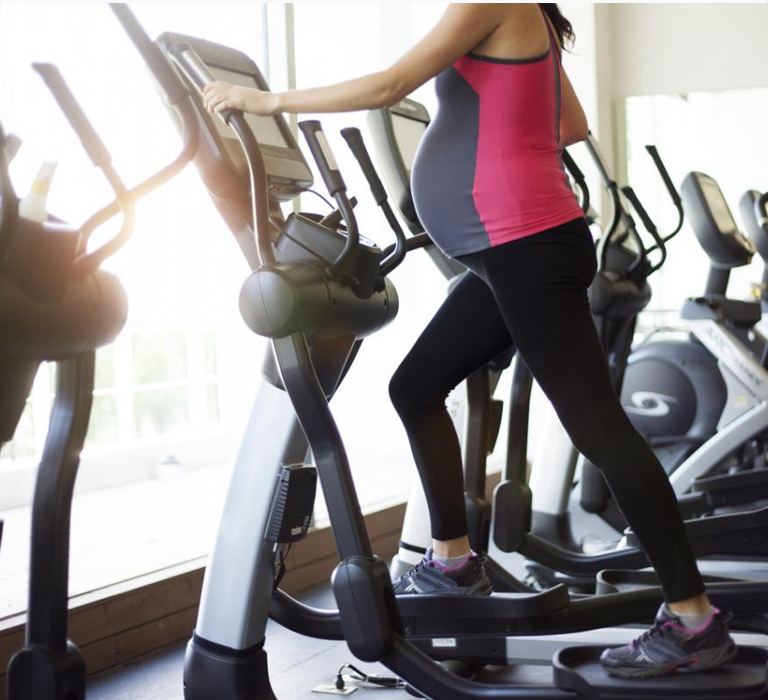
Exercising While Pregnant: Safety, Benefits & Guidelines
There are usually many questions that come to mind when planning how to exercise during pregnancy. Physical exercise is bodily activity that improves or maintains physical fitness and overall health and wellness. This type of exercise during pregnancy is important and can help with some common discomforts of pregnancy and even help prepare your body for labor and delivery.
Is exercise during pregnancy safe?
Overall and in most cases, exercise is safe during pregnancy. You will usually find it is even recommended. Typically, the first rule of thumb is if you were physically active before you were pregnant, it is likely safe to remain active during pregnancy. More than likely, your healthcare provider will tell you to remain active, as long as it is comfortable and there are no other health conditions suggesting otherwise.
Now is not the time to exercise for weight loss, however, proper exercise during pregnancy will likely help with weight loss after the delivery of your baby. Exercise does not put you at risk for miscarriage in a normal pregnancy. You should consult with your health care provider before starting any new exercise routine. We have more information at exercise warning signs.
What are the benefits of exercise during pregnancy?
Exercising for 30 minutes on most, or all, days can benefit your health during pregnancy. Exercising for just 20 minutes, 3 or 4 days a week, is still beneficial, as well. The important thing is to be active and get your blood flowing.
To have success in completing exercises during pregnancy, it is a good idea to plan the days and times during the week when you will exercise. As shown in the photo above, prenatal yoga is a great, low impact exercise that can be highly beneficial for pregnant women.
Here are some of the benefits from exercise during pregnancy you may experience:
Helps reduce backaches, constipation, bloating, and swelling
May help prevent, or treat, gestational diabetes
Increases your energy
Improves your mood
Improves your posture
Promotes muscle tone, strength, and endurance
Helps you sleep better
Regular activity also helps keep you fit during pregnancy and may improve your ability to cope with labor. This will make it easier for you to get back in shape after your baby is born.
Guidelines for choosing an exercise during pregnancy
If you participated in a regular exercise activity prior to becoming pregnant, it is probably fine to continue to participate during your pregnancy. There are many exercises that are safe to do during your pregnancy, but it is important not to overdo it and to use caution.
You will probably want to avoid these types of exercises during pregnancy:
Activities where falling is more likely
Exercise that may cause any abdominal trauma, including activities that with jarring motions, contact sports or rapid changes in direction
Activities that require extensive jumping, hopping, skipping, or bouncing
Bouncing while stretching
Waist twisting movements while standing
Intense bursts of exercise followed by long periods of no activity
Exercise in hot, humid weather
Do not hold your breath for an extended period of time
Do not exercise to the point of exhaustion
You may want to include these basic guidelines in planning exercise during pregnancy:
Be sure to wear loose fitting, comfortable clothes, as well as, a good supportive bra.
Choose well-fitting shoes that are designed for the type of exercise you are doing.
Exercise on a flat, level surface to prevent injury.
Eat enough healthy calories to meet the needs of your pregnancy, as well as, your exercise program.
Finish eating at least one hour before exercising, see also pregnancy nutrition.
Drink plenty of water before, during and after your workout.
After doing floor exercises, get up slowly and gradually to prevent dizziness.
Please see this article for more information on exercise guidelines.
Which exercises during pregnancy are beneficial
Before you begin exercising, remember it is important to talk to your health care provider. If you typically get little or no activity, walking is a great exercise to start with. Walking is usually safe for everyone, it is easy on your body and joints, and it doesn’t require extra equipment. It is also easy to fit into a busy schedule.
Squatting during labor may help open your pelvic outlet to help your baby descend, so practice squatting during pregnancy. To do a squat, stand with feet shoulder width apart and slowly lower into a squat position. You should keep your back straight, heels on the floor and your knees shouldn’t protrude in front of your feet. Hold the squat for 10 to 30 seconds; you can rest your hands on your knees.
Then slowly stand back up, pushing up from your knees with your arms, if you need to. Repeat this 5 times working up to more.
Pelvic tilts strengthen the muscles in your abdomen and help alleviate back pain during pregnancy and labor. To do pelvic tilts get on your hands and knees. Tilt your hips forward and pull your abdomen in. Your back should slightly round. Stay in this position for a few seconds then relax without letting your back sag. Repeat a couple of times, working up to 10.
Body changes that affect exercise during pregnancy
There are many changes happening in your body during pregnancy. First, joints are more flexible from the hormones which cause certain muscles to relax during pregnancy. Your center of gravity or equilibrium is shifted from the extra weight in the front, as well as, your shifting hips.
This can affect your balance as you near your due date. The extra weight will also cause your body to work harder than before you were pregnant.
All of these factors may affect how you exercise and what exercises you choose to do. Remember, it is always recommended you consult your healthcare provider about exercises for your specific situation.
